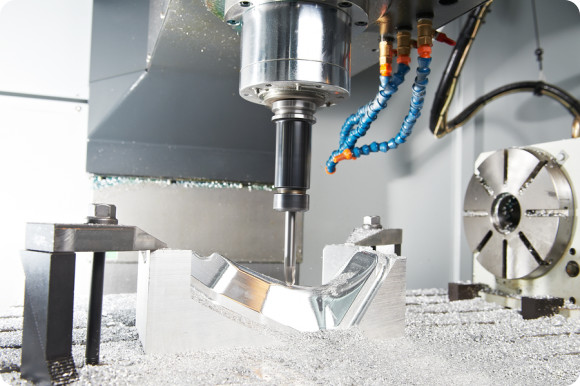
(1) Tie bar clearances and platen size, front to back, top to bottom. Will the planned mold fit on the platens? In some cases it is all right to have the mold larger than these dimensions; it may even overhang the platens, as long as the cavities are located within the area between the tie bars. In some (today rare) cases, it may be necessary to pull one or both top tie bars to be able to install the mold. If this is required, the designer must find out if the planned machines have provisions for easy tie bar pulling.
(2) Locating ring size,sprue bushing radius. The locating ring centers the injection half of the mold on the stationary (or “hot”)platen. The sprue bushing radius must fit the injection nozzle radius. There are standards, but make sure you have the appropriate sizes. Some of the machines for which the mold is planned may have different sizes, so more than one locating ring (or an adaptor ring) and different sprue bushings may be required.
(3) Mold mounting holes and slot pattern (Euro, SPI,or other standard?). How will the mold be mounted on the platens? The best method is where the mold halves are directly screwed onto the platens, using standard mounting holes on the platens or clearance holes on the platens with threaded holes in the mold. With this method the full holding force of the screw is utilized. But this is often not possible, especially if the mold must fit several, different machines. In these cases, mold clamps are frequently used, with the clamp screws making use of standard mounting holes or slots in the platens. The disadvantage of this method is that only a portion of the holding force of the screw is utilized.
(4) Quick mold change features. There are a number of commercial and proprietary systems, and the designer must get the specifications to fit the system before starting to design the mold.
(5) Machine ejector. The ejector force is usually about 10% of the clamp force, which is sufficient for most molds, but there are cases where this is not enough. The mold may have to be equipped with additional ejection means, often built-in hydraulic or air actuators. The machine ejectors are always on the moving platen,but their size and pattern will vary according to the builder’s standards (Euro,SPI,other standard?). If the mold will make use of the machine ejectors it is important to know their size and location when designing the ejection mechanism.
(6) Shut height. This is the total height of the mold,that is,the distance from the mounting face of the cavity half to the mounting face of the moving half. This distance must not be greater than the maximum distance of the platen surfaces of the machine when in fully closed position. The machine specifications indicate maximum and minimum shut height. If the laid-out shut height is too great,there are several ways to reduce it:
- Investigate whether all the shown mold plates are really necessary. In some molds,for example,the mounting plate under an ejector box can be omitted,by fastening the mold to the machine using the mold parallels
- Reduce the thickness of one or more of the mold plates.
- If neither is possible without compromising the quality (strength) of the mold, a different machine must be selected. This should be discussed with the molder before proceeding.
Conversely,if the shut height is too small,plate thicknesses can be increased, which is not always a good solution because it makes the mold unnecessarily heavy and adds cost to the mold. Some machines are equipped with Bolster plates, or bolster blocks, which are mounted on the moving platen in order to decrease the minimum shut height.
(7) Clamp stroke. In most machines, the mold clamp stroke is adjustable. For many molds, the suggested minimum stroke should be about 2.5 times the height of the product to ensure that the molded pieces have enough space to fall free between the mold halves during ejection; however, the stroke should not be less than about 150mm (6 inches), so that the mold surfaces can be accessed for servicing while the mold is open. There are exceptions to these two suggested values, for special applications, particularly when using automatic (robotic) product removal methods, which are outside the scope of this book.
(8) Ejector stroke. This stroke is also adjustable, within the limits of the machine specifications. The designer must make sure that the available ejection stroke is large enough to push the products completely off the cores, in cases where little draft is specified, for example, when molding deep-draw containers. With good draft, it is usually not necessary to do more than push the products some short distance before they fall free, or before air-assist features will blow them away. There are again some exceptions, particularly with robotic product removal methods.
(9) Clamping force. The designer must make sure that the total projected areas of all cavities, plus the projected areas of any runner system in the same parting plane, multiplied by the estimated injection pressure, will not be greater than the available machine clamping force. As we have seen earlier, the estimated injection pressure depends on the ease of plastic flow (viscosity, temperature) and on the wall thickness of the product. In borderline cases, it is sometimes possible to change conditions, for example, in a very large product, by increasing the number of gates and placing them far apart; it may then be possible to use lower injection pressures, thereby requiring less clamp.
(10) Auxiliary controls. Some molds may require specially designed air circuits for air ejection or for air actuators. Is the machine equipped for such circuits, to be timed within the molding cycles? In some cases, hydraulically actuated side cores may be required. Has the machine a provision for timed core pulls?
